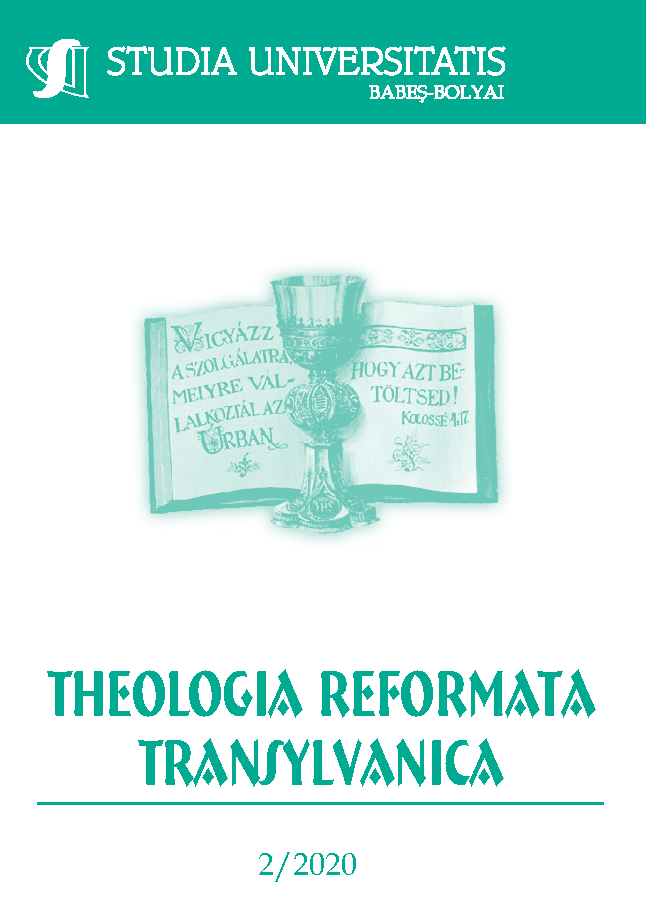History, Local Stories, and Power Dynamics: The Changes of the 20ᵗʰ Century and the Counts of Bethlen of Bonyha/Bahnea
DOI:
https://doi.org/10.24193/subbtref.65.2.07Keywords:
history, local stories, everyday life, regime change, counts of Bethlen, Bonyha.Abstract
The Bethlens acquired an estate in Bonyha/Bahnea located by Kis-Küküllő/ Târnava Mică River at the turn of the 16ᵗʰ century, but their presence can be documented with certainty starting 1545: they remodelled their manor-house the very same year. However, the over 400-year-old local history of the family took a sudden turn and was almost completely disrupted in 1946 and the sub-sequent years as being moved to an assigned residence. Apart from the introduction and some theoretical and methodological considerations, this study is divided into three parts and aims both at tracing what the 400 years meant, the role of the family in the life of the village, and the area and the macro - and microprocesses that accompanied the liquidation of the family’s estate in Bonyha. Finally, the most important part of the paper attempts to examine the way in which the Bethlens are still present in the life of the village. This study starts from the premises that the major political events (wars, regime changes, border changes) represent the environment of everyday life, and people should react to these apparently external and remote conditions in order to shape their own day-to-day horizons. In this context, the seemingly objective statement that an agrarian reform took place in the year 1921 meant for the Bethlen family of Bonyha the first stage in the tragic process towards the liquidation of the estate and ultimately the family’s disappearance. Thus, this study analyses the dynamic interrelationship between macro history and the small, local stories.
References
BICSOK, Zoltán – ORBÁN, Zsolt (2011): „Isten segedelmével udvaromat megépítettem…”. Történelmi családok kastélyai Erdélyben. Miercurea Ciuc, Gutenberg.
BÍRÓ, Sándor (2002): Kisebbségben és többségben. Románok és magyarok 1867–1940. Miercurea Ciuc, Pro-Print.
COHN, Bernard S. (1980): History and Anthropology: The State of Play. In: Comparative Studies in Society and History 22, 2(Apr.). 198–221.
EGYED, Ákos (1981): Falu, város, civilizáció. Bukarest, Kriterion.
FABIAN, Johannes (1983): Time and the Other: How Anthropology Makes Its Objects. New York, Columbia University Press.
FÜLÖP, Zsuzsánna (2012): A bethleni Bethlen család bonyhai kastélya. Dissertation paper – manuscript. Babeş–Bolyai University, Department of Art History, Cluj-Napoca.
GYÁNI, Gábor (1997): A mindennapiélet mint kutatásiprobléma. In: Aetas 12, 1. 151–161.
HANN, Chris M. (2009): The Theft of Anthropology. In: Theory, Society and Culture 26, 7–8.126–147.
JAKAB, Albert Zsolt (2012): Emlékállítás és emlékezési gyakorlat. A kulturális emlékezet reprezentációi Kolozsváron. Cluj-Napoca, Kriza János Néprajzi Társaság – Nemzeti Kisebbségkutató Intézet.
KASCHUBA, Wolfgang (2012): Einführung in die Europäische Ethnologie. Munich, C. H. Beck.
KESZEG, Vilmos (2011): A történetmondásantropológiája. Cluj-Napoca, Kriza János Néprajzi Társaság – Magyar Néprajzés Antropológia Intézet.
MEDICK, Hans (1995): “Missionaries in the Rowboat”? Ethnological Ways of Knowing as a Challenge to Social History. In: Lüdtke, Alf (ed.): The History of Everyday Life. Reconstructing Historical Experiences and Ways of Life. Princeton, Princeton University Press.42–71.
Szabó, Töhötöm Á. (2013): Gazdasági adaptáció és etnicitás. Gazdaság, vidékiség és integrációegy erdélyi térségben. Cluj-Napoca, Nemzeti Kisebbségkutató Intézet – Kriza János Néprajzi Társaság.
VERDERY, Katherine (1983): Transylvanian Villagers. Three Centuries of Political, Economic, and Ethnic Change. Berkeley, University of California Press.
WOLF, Eric R. (1982): Europe and the People without History. Berkeley, University of California Press.
Sources
GOLEA, Nicolae (1996): O viaţă închinată unui sat. Amintiri. Târgu-Mureș, Transilvania.
HAJDÚ, Mihály – SEBESTYÉN, Zsolt (2003): Kisküküllő és Nagyküküllő megye. Szabó T. Attila kéziratos gyűjteményéből közzéteszi. Szabó T. Attila erdélyi történeti helynévgyűjtése 4. Magyar Nyelvtudományi Társaság, Budapest.
KIS-KÜKÜLLŐ (1891–1931) – Vegyes tartalmú hetilap. Dicsőszentmárton.
KŐVÁRI, László (1847): Erdélyország statistikája. Kolozsvár, Tilsch János nyomdája.
LUKINICH, Imre (1927): A bethleni gróf Bethlen család története. Budapest, Athenaeum R. T.
MKOMS (1897) – A magyar korona országainak mezőgazdasági statisztikája. Budapest, Pesti Könyvnyomda-Részvény-Társaság.
MOL P1951 – National Archives of Hungary, Archives of the Bethlens (P 1951). Estate administration and management documents.
PÉTERFY, László (2000): Bonyhaésegyháza. Odorheiu Secuiesc, self-released publication.
RUBINEK, Gyula (1911): Magyarországi gazdaczímtár. Magyarország, Horvát- és Szlavonországok 100 kat. Holdon felüli birtokosainak és bérlőinek czímjegyzéke, az egyes megyék részletes monográfiájával. Budapest, Országos Magyar Gazdasági Egyesület Könyvkiadóvállalata.
ROLMMI – Fond col. de evid. cad. 196 Román Országos Levéltár Maros Megyei Igazgatósága [Romanian National Archives Mureș County Directorate], Târgu-Mureș – cadastral collection.
TELEKKÖNYV [Land Register] –Excerpt from the land register of the Bethlens of Bonyha. In possession of the Reformed Church District of Transylvania, Cluj-Napoca.
Downloads
Published
How to Cite
Issue
Section
License
Copyright (c) 2020 Studia Universitatis Babeș-Bolyai Theologia Reformata Transylvanica

This work is licensed under a Creative Commons Attribution-NonCommercial-NoDerivatives 4.0 International License.



